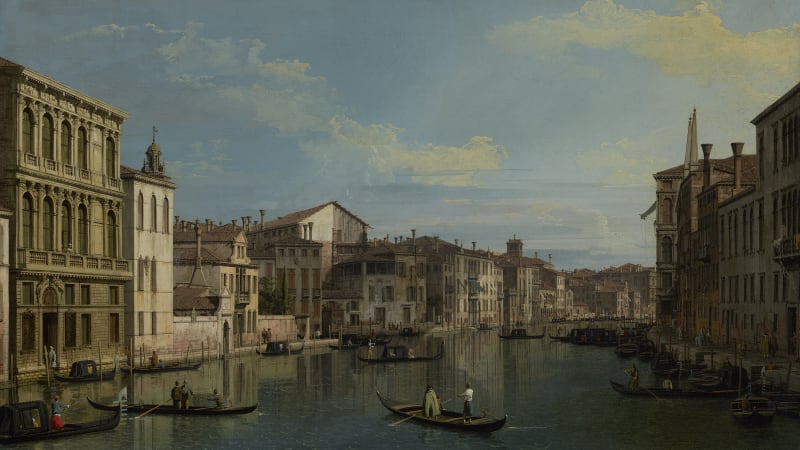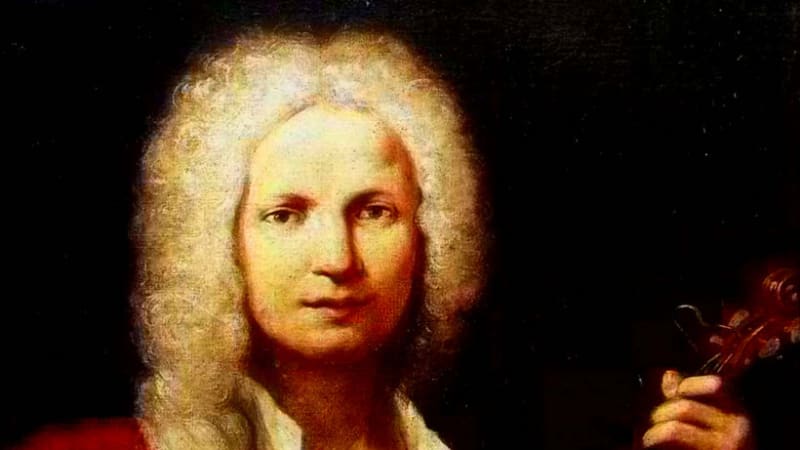Virtuosity in Vivaldi’s Concertos
November 30, 2017
Violin virtuosity reached a new height around the year 1700. From the start of the Baroque Period a hundred years earlier, skilled craftsmen like Gasparo da Salò advanced string instrument building technique until it reached its apex with the instruments of Antonio Stradivari and Giuseppe Guarneri. The burgeoning music publishing industry also inspired composers to write pieces that would stand out and establish their international reputations. The new instruments and new ability to distribute music motivated and challenged composers to write technically demanding music that would have wide appeal.

Antonio Vivaldi, born in Venice in 1678, took advantage of these new trends in the music industry. He was an incredible violin virtuoso—his playing was so exhilarating and daring that a contemporary described himself as “terrified” when he heard it. He was also a prolific composer, a skilled opera impresario, and all-around musical entrepreneur. His vocal music, today mostly forgotten, was an important part of his career. He claimed to have composed 94 operas, both for his main theater, the Teatro San Angelo in Venice, and many patrons elsewhere, and he traveled extensively as an impresario after 1718.

When Vivaldi was starting out, the concerto form popularized by Rome-based composer Arcangelo Corelli dominated Italian instrumental music. It developed out of the trio sonata and its three solo instruments—two violins and cello—were accompanied by strings and continuo. Corelli had a lot of qualities that Vivaldi didn’t: he was well educated, a respected mentor and teacher, and a writer of virtuosic but tasteful music. Vivaldi was none of those things. He was brash, egotistical, and his playing was as fiery as his difficult personality. (“His vanity was notorious” according to biographer Michael Talbot.) Corelli’s students organized memorial concerts every year for decades after his death—Vivaldi had already been forgotten by the time he died penniless in 1741 in far-away Vienna.
Vivaldi’s concertos brought together the right elements at the right time to influence a generation of composers. His style caught fire and blazed across Europe, starting with his Op. 3, L’estro armonico (the harmonic inspiration, 1711), a published collection of 12 concertos for one, two, and four solo violins accompanied by strings and continuo.
“It was not only the outward form, so original and different, of Vivaldi’s L’estro armonico which fascinated and enthralled musicians all over Europe but the intensely personal style—the ‘Vivaldi style’ par excellence, with its wiry, nervous sound and that intense concentration of rhythmic designs which, once experienced, are literally unforgettable.” H.C. Robbins Landon
One of the most influential instrumental music publications of the 18th century, L’estro armonico set new standards in violin playing. Vivaldi brought a new depth and singing quality to slow movements, a cross-over from his vocal writing. He also took advantage of another new trend: imitating the sound of the trumpet. Trumpet playing was an integral part of life in Baroque Italy: it was featured in everything from royal processionals to special masses with choir, often in groups of five or six, to everyday church music, sonatas, and concertos. Violinists borrowed the trumpet's quick repeated notes and arpeggios (the most natural intervals to play on a valveless trumpet), and were able to play them with more control and add virtuosic passagework.
Vivaldi’s formal innovation was just as important as his unique style of violin playing. L’estro armonico established Vivaldi’s preference for three contrasting movements (fast-slow-fast). It also pioneered a new use of the ritornello form. The ritornello (“return”) started out in vocal music as a repeated instrumental interlude between sung sections and it was just entering the realm of instrumental music when Vivaldi started composing. Vivaldi quickly elevated it to the standard form for all concerto movements. In his music, ensemble ritornello sections are tonally stable to establish the home key at the start and end of the movement and reinforce each change of key during the movement. The solo sections, in turn, are tonally unstable, modulating between keys, which amps up the tension during the daring solo passages.
The Vivaldi craze was short and intense. His music served as a sort-of flashpoint for late Baroque style: it both influenced other composers and was simultaneously criticized by them for its freewheeling virtuosity. Vivaldi’s difficult personality didn’t help. He stopped publishing his instrumental music in 1730 because he didn’t feel it was lucrative enough, and his influence quickly waned after that. But he brought a clear structure and new dramatic power to the concerto, foreshadowing the Classical period, and he opened up new ways forward in violin playing.
Article by Laura Keller, Editorial Manager